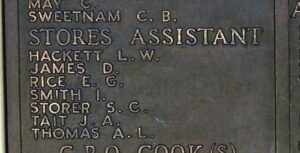The members of Ysgol Gyfun Llandyssul (Llandyssul County School) who fell during both world wars are commemorated on a brass war memorial, which is located inside the school. The photograph below of the memorial is courtesy of Ray Jones, but thanks is also due to Mike Berrell, who sent in the original photos. This memorial was moved in the summer of 2016 to the site of the new Llandysul school – Ysgol Bro Teifi – when the old school was closed.
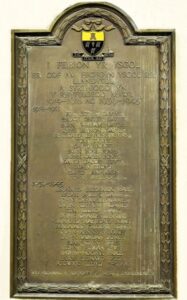
The Great War, 1914-1918
Benjamin Jones Davies, Captain, South Wales Borderers. Benjamin was the son of Griffith and Catherine Margaret Davies, of The Lodge, Llandyssul. Benjamin was educated at Llandovery 1900 from 1905, and after leaving Llandovery, entered St. David’s College, Lampeter, where he became Senior Scholar and graduated B.A. In 1912 Benjamin was a cadet in the Oxford University O.T.C., and in the July of that year was listed as a 2nd Lieutenant, in Reserve of Officers O.T.C. In August 1914, Benjamin joined the University and Public Schools Battalion, Royal Fusiliers, and on 7 August 1914 was commissioned into the 3rd Battalion, South Wales Borderers. On 12 March 1915 Benjamin embarked for France, and on 1 May 1915, was promoted to Captain. In September 1915, Benjamin was posted to the 2nd Battalion, SWB, serving at Gallipoli attached to 87 Brigade, 29th Division. He arrived at Gallipoli on 6 September 1915, and his new Battalion moved to Imbros on 22 September. However, Benjamin’s stay with the Battalion was short lived as he fell ill, and on 28 September 1915 he was in hospital at Alexandria. In February 1916, Benjamin had recovered, and rejoined the Battalion. In March 1916 the Battalion was posted to France, sailing to Marseilles. On its arrival in France, the Battalion went into training at Domart. On 1 July 1916 the Battalion went into action at Beaumont Hamel, on the first day of the Battle of the Somme, and were decimated. Benjamin, along with a Lieutenant Ross, organised the survivors of the attack into two Companies, taking over 300 yards of front line trenches near Mary Redan. The Division then moved for a short period to the Ypres Salient, prior to returning to the Somme Front in October 1916, moving to positions at Grease trench near Gueudecourt, enduring freezing conditions. Here Benjamin was wounded. In April 1917 he rejoined his Battalion at Monchy-Le-Preux, near Arras. On 19 May 1917, Benjamin was killed in action when his Company came under heavy enemy machine gun fire. The Battalion records state that he “led an advance with the utmost courage”. Benjamin was 31 years old, and as he has no known grave, is commemorated on the Arras Memorial, France.
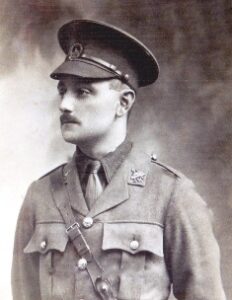
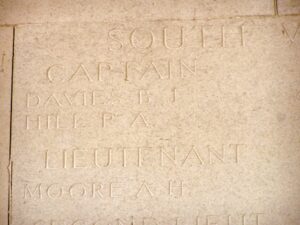
Enoch Oliver Davies, Lance Sergeant, 19042, Royal Welsh Fusiliers. Enoch was the son of John and Hannah Davies, of Maesyffin, Horeb, Llandyssul. He served on the staff of Tumble Council School prior to enlisting at Llanelli into the 16th Battalion, Welsh Regiment. The Battalion formed part of 113 Brigade, 38th (Welsh) Division, and moved to France in December 1915, spending their first winter in the trenches near Armentieres. In June they marched south to the Somme, where they were tasked with the capture of Mametz Wood. The attack on the wood began on 7 July 1916, but met with fierce resistance. After a change in command, the Division launched a fresh assault on 10 July 1916. Enoch was killed in action at Mametz on 11 July 1916, aged 20. He has no known grave, and so he is remembered on the Thiepval Memorial, France.
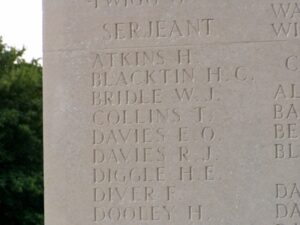
Evan William Davies, Private, 65352, Welsh Regiment. Evan was the son of Ebenezer and Mary Davies, of School House, Henllan. He enlisted at Carmarthen into the army on 1 November 1916, and was posted to France on 7 April 1918, where he joined the 2nd Battalion, Welsh Regiment. The battalion had been on the Western Front since the outbreak of war, attached to 3 Brigade, 1st Division, and had fought in almost every major battle thereafter. After spending the Winter in Flanders, the Division was near Estaires when the German Spring Offensive caught them, fighting through the Battles of Estaires, Hazebrouck, and Bethune before being moved South again to Arras to rebuild. From here, the 1st Division took part in the great offensive, which was to ultimately win the war, fighting at the Battle of Drocourt-Queant, and at the Battle of Épehy during August and September 1918. The Division pushed on towards the St. Quentin Canal, and after crossing the Hindenburg Line fought at the Battles of Beaurevoir, the Selle and the Sambre. Evan was killed at the Sambre on 23 October 1918. He was 19 years old, and is commemorated on the Vis-En-Artois Memorial, France.
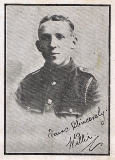
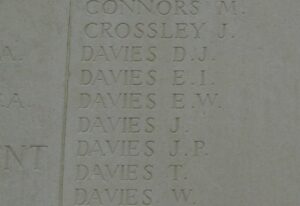
Rhys Beynon Davies, Second Lieutenant, Royal Flying Corps. Rhys was born on 15 May 1896, the son of James and Margaret Davies, of Llwyngwern, Henllan. He was educated at Aberbanc and at Llandyssul County School, before attending St George’s School in London, where he joined the Officer Training Corps. He was commissioned into the 4th Battalion, Northumberland Fusiliers on 5 August 1915, and landed in France on 14 March 1916, where he was attached to a Trench Mortar Battery. On 23 October 1916, Rhys was attached to 2 Squadron, Royal Flying Corps, as an Observer. He was wounded on 11 December 1916, while on patrol over Hulloch Wood, Loos. After a spell home recuperating, Rhys rejoined his Squadron in France on 23 February 1917. The Battle of Arras was launched the following month, and 2 Squadron flew many reconnaissance missions over the German lines, directing artillery fire onto key positions. On 1 May 1917, Rhys was flying as an Observer in an Armstrong Whitworth F.K.8., nicknamed the ‘Big-Ack’, biplane, Serial A9997, which was piloted by W.P. Eastwood, when they were attacked by German fighters. After a brief fight, the outmatched F.K.8. received several bullets, one of which struck its fuel tank, setting the aircraft on fire and forcing Eastwood to bring the aircraft down quickly to earth. Rhys was sadly killed during the fight. He was 20 years old, and is buried at Monchy-Breton Churchyard, France.
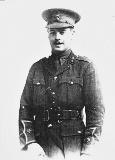
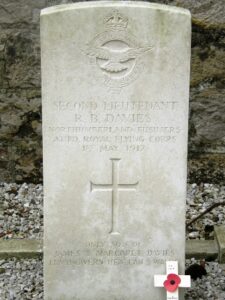
Reginald Jenkins Evans, Ordinary Seaman, Z/3826, Royal Navy. Reginald was born on 22 September 1898, the son of William and Sarah Evans, of Fair View, Llandyssul. He served in the Royal Navy, aboard HMS Vanguard, which was attached to the Grand Fleet stationed at Scapa Flow. On 9 July 1917 a giant explosion tore through the Vanguard while she was at anchor at Scapa Flow. Reginald was killed in action during the explosion that day. He was just 18 years old, and as he has no known grave he is remembered on the Plymouth Naval Memorial, Devon.
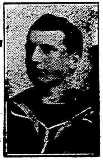
Tom Evans, Private, 53676, Welsh Regiment. Tom was the son of Daniel and Catherine Evans, of the Porth Hotel, Llandyssul. He resided at Glanteifi prior to enlisting at Llanelli into the Pembroke Yeomanry. He later transferred into the 2nd Battalion, Welsh Regiment, which was attached to 3 Brigade, 1st Division. The Division had been one of the first to arrive in France, fighting at the Battle of Mons, and taking part in the retreat to the Marne, where the Germans were stopped. They then fought at the Aisne, and at Chivy, before being moved North to Ypres. Here they fought at the First Battle of Ypres, where they again stopped the German Offensive, before wintering in Flanders. The following year saw them in action again at the Battle of Aubers, before moving South to Loos, where they fought during the Battle of Loos, and the action at the Hohenzollern redoubt. Again they were required for a major offensive, moving South to the Somme, where they fought during the opening of the Somme Offensive at the Battle of Albert, then at Bazentin, Pozières, Flers-Courcelette and Morval. Tom was wounded on the Somme, after the Battle had been officially closed down, and sadly died of wounds on 29 December 1916, aged 30. He is buried at St. Sever Cemetery Extension, Rouen, France.
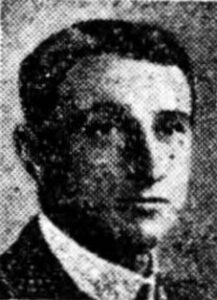
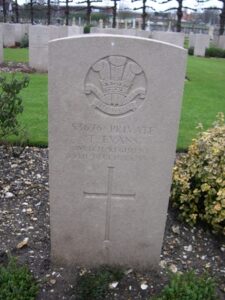
David Jones, Guardsman, 22441, Grenadier Guards. David was born at Cwm Gilfachwen, Llandyssul, the son of John and Anne Jones. He enlisted at Bargoed into the 1st Battalion, Grenadier Guards, who moved to France in September, 1914 attached to 20 Brigade, 7th Division. The Division was formed during September, 1914 and landed at Zeebrugge on 6 October 1914. The City was already falling however, and so the Division was moved to Ypres, where they became the first British Division to hold the city. They fought during the First Battle of Ypres, and helped stop the German advance through Belgium, and in March, 1917 fought at the Battle of Neuve Chappelle. During May they fought at the Battle of Aubers Ridge, and at Festubert, before the Grenadiers were transferred to 3 Guards Brigade, Guards Division on 4 August 1915. They then fought through the Battle of Loos from September onwards, and then moved to Calais in 1916 to rest. In May the Division moved to Ypres. David was killed in action whilst his battalion was in the line near Potijze on 8 May 1916, aged 21. He is buried in Ypres Reservoir Cemetery, Belgium.
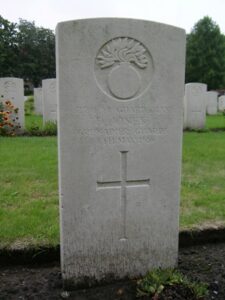
Evan Tom Jones, Private, 43634, Worcestershire Regiment. Evan was the son of David and Mary Jones, of Llettyrwenol, Cwrtnewydd, Llanybyther. He enlisted at Narberth into the Cheshire Regiment, before being posted to join the 2/8th Battalion, Worcestershire Regiment. The battalion had been in France since May 1916, attached to 183 Brigade, 61st (2nd South Midland) Division. The Division saw its first major action at Fromelles, which turned out to be a disaster, costing thousands of needless casualties. The Division didn’t see further action until the Third Battle of Ypres late in 1917, and the Battle of Cambrai later that year. The Division again suffered heavy casualties during the German Spring Offensive of 21 March 1918, fighting a gallant rearguard action near St. Quentin, before being moved to Flanders, where it again saw heavy fighting. The Division then took part in the Advance in Flanders from August 1918 onwards, and it was during this advance that Evan was killed on 5 October 1918. He was just 18 years old, and is buried at Leuze Communal Cemetery, France. There is a memorial to Evan at Capel y Bryn, Cwrtnewydd.
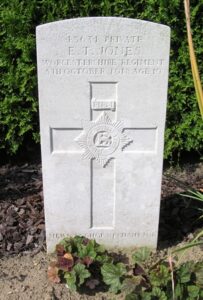
John Jones, Private, 201530, Welsh Regiment. John was the son of Evan and Hannah Jones, of Ffoshelyg, Llandyssul. He enlisted at Newport into the 1/4th Battalion, Welsh Regiment, which formed part of the South Wales Brigade. On 17 April 1915 the Battalion was attached to 159 Brigade, 53rd (Welsh) Division, and in July that year sailed with the Division to Alexandria, en route to Gallipoli. On 9 August 1915 the Division landed on Gallipoli, at saw action almost straight away. They remained here until evacuation in December 1915 after suffering heavy casualties, and moved to Egypt, taking up positions on the Suez Canal Defences. In 1916 the Division fought in a few minor skirmishes with the Turks, and Arabs loyal to the Turks, and in 1917 an offensive was launched into Palestine. John was killed in action here, during the First Battle of Gaza, on 26 March 1917. He was 23 years old and is remembered on the Jerusalem Memorial, Israel.
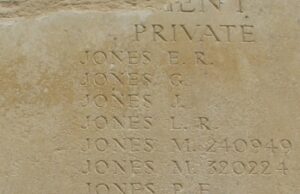
John Owen Jones, Private, 125618, Machine Gun Corps. John was the son of William John Jones and Hannah Jones, of Gwylfa, Llandyssul. He enlisted at Llanelli into the King’s Liverpool Regiment, but later transferred into the 20th Battalion, Machine Gun Corps. This Battalion was attached to the 20th (Light) Division, which had moved to France during July 1915 and assembled at St. Omer, before moving to positions near Fleurbaix. When the Battle of Loos was launched on 25 September 1915 the Division fought a diversionary attack towards Fromelles. Later that year they moved north, and fought at the Battle of Mount Sorrel alongside the Canadian Corps. Over the winter of 1915/16, the Division remained in positions south of Ypres, and fought at the Battle of Mount Sorrel in June, alongside the Canadian Corps. They then fought through the Somme Offensive, at the Battles of Delville Wood, Guillemont, Flers-Courcelette, Morval and Le Transloy, and took part in the advance to the Hindenburg Line in March 1917. Later that year they fought at Third Ypres, at the Battles of Langemarck, the Menin Road, and Polygon Wood, before moving south in November, to take part in the Battle of Cambrai. They remained in the area between Cambrai and St. Quentin over the winter of 1917/18 and were attacked there by the German Spring Offensive of 21 March 1918. They then fought in the retreat at the Battle of the Somme Crossings and the Battle of Rosieres. Due to the terrible amount of casualties suffered by the Division in March and April 1918 they were moved to positions south of Amiens to rebuild. John was wounded sometime after, as he died of wounds on 9 July 1918. He was just 19 years old, and is buried at Aubigny Communal Cemetery Extension, France.
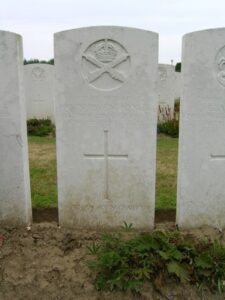
Thomas William Jones, Private, 24230, Welsh Regiment. Thomas was born in Llandyssul, the son of William J. Jones. The family later moved to 19, Brynheulog Terrace, Tylorstown, Glamorgan. Thomas enlisted at Llandyssul into the 16th Battalion, Welsh Regiment, which were attached to 11 Brigade, 38th (Welsh) Division. The Division had landed in France during December 1915 and spent their first winter in the trenches near Armentieres, which is where Thomas was wounded. He died of wounds on 1 April 1916, aged just 19, and is buried at Guards Cemetery, Windy Corner, Cuinchy, France.
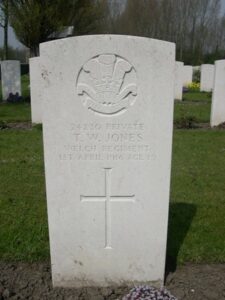
David Jacob Lewis, Second Lieutenant, Royal Fusiliers. David was the son of David and Anne Lewis, of Bronheulog, Llandyssul. He enlisted into the 2nd Battalion, Royal Fusiliers, which were attached to 86 Brigade, 29th Division. The Division moved to Gallipoli via Egypt, landing on 25 April 1915. They remained here until evacuation to Egypt on 11 January 1916 and then moved to the Western Front on 15 March. The Division took part in its first major action in France during the 1916 Somme Offensive, and fought at the Battles of Albert and Le Transloy, suffering heavy casualties. David was killed in action on the Ancre during the winter of 1916/17, on 28 February 1917, aged only 22. His body was lost on the battlefield, and so he is remembered on the Thiepval Memorial, France.
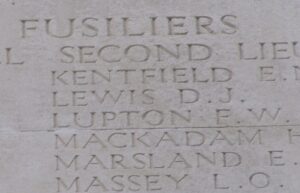
John Lewis Lloyd, Captain, Canadian Infantry. John was born on 17 October 1881, the son of Richard and Mary Elizabeth Lloyd, of Bryntawel, Llandyssul. He emigrated to Canada prior to the war, and enlisted at Victoria, British Columbia on 6 December 1915. His papers show that he had served for three years in the 3rd Volunteer Battalion, Welsh Regiment prior to emigrating, and so he was immediately commissioned into the 102nd Battalion (Central Ontario), Canadian Infantry. The Battalion formed part of 11 Brigade, 4th Canadian Division and moved to France in August 1916. They saw action during the Somme Offensive at Le Transloy, and at the Ancre, before moving to Arras, where they assaulted and captured Vimy Ridge during April 1917. In August they fought at the Battle for Hill 70 near Loos, and in October fought at Third Ypres, at the Second Battle of Passchendaele. August, 1918 saw the Canadian Corps fighting on the Somme. On 8 August 1918 a Battle took place around Villers Brettoneux, where the Allies gained a victory over the Germans that turned the war. The Canadian Corps were at their side, during the Battle of Amiens, which is where John was killed on 8 August 1918, aged 36. He is buried at Beaucourt British Cemetery, France.
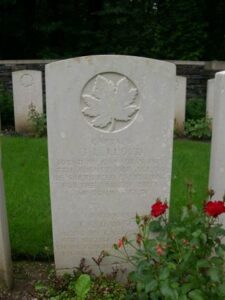
David Richards, Private, 16642, Royal Welsh Fusiliers. David was born at Aberbanc. He enlisted at Bronwydd into the 13th Battalion, Royal Welsh Fusiliers, which was attached to 113 Brigade, 38th (Welsh) Division. On 2 December 1915 the battalion moved to France, and the entire Division moved to the Fleurbaix sector, where it was initiated into trench warfare. During June 1916 the Division marched south to the Somme, and on 7 July 1916 attacked Mametz Wood. The initial attack failed, and it was three days later, on 10 July, that a fresh attack was mounted. After two days of heavy hand to hand fighting within the wood, the Germans withdrew, and the battered Welshmen moved via Hébuterne to Boesinghe, on the Yser Canal. David was badly wounded at Ypres on 1 July 1917, and died of his wounds late that day at the Casualty Clearing Station at Proven. He is buried at Mendinghem Military Cemetery, Belgium. His name can just be seen behind the foliage at the base of his headstone, which commemorates two men.
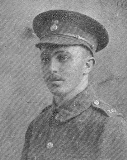
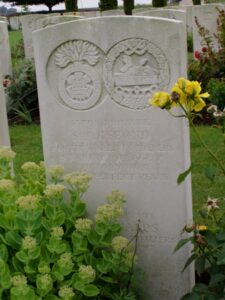
Oliver Stewart Roper, Captain, Kings Own Yorkshire Light Infantry. Oliver was the son of John Simpson Roper and Harriet Frances Roper of Lancaster. He had been educated at Llandyssul prior passing for Cambridge in 1913, where he joined the Officer Training Corps. He was commissioned from the Cambridge OTC on 10 November 1914 and was posted to the 2/5th Battalion, King’s Own Yorkshire Light Infantry, which was attached to 187 Brigade, 62nd (2nd West Riding) Division. The Division moved to France during December 1917 and took up positions in the Ancre Valley. They followed the German retreat to the Hindenburg Line in March 1917 and fought at Bullecourt between April and June. In November they took part in the Battle of Cambrai, where Oliver was killed in action on 27 November 1917. He was 24 years old and is remembered on the Cambrai Memorial, Louverval, France. Oliver is not commemorated at Llandyssul School.
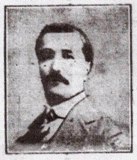
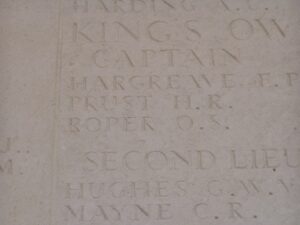
John Williams, Private, 74846, Royal Welsh Fusiliers. John had been born at Llanfihangel, and was the Husband of Lily Beatrice Williams, of 7, Commercial Street, Pontnewydd. He had served with the Military Foot Police before being transferred into the 9th Battalion, Royal Welsh Fusiliers late in 1917. The battalion was in France attached to 58 Brigade, 19th (Western) Division. The Division had fought gallantly at Loos, the Somme and at Third Ypres. In 1918 they were caught up in the German Spring Offensive near St. Quentin, where they suffered terrible casualties, during the Battle of Bapaume, where they were driven back by a stronger German force. The decimated division moved to Ypres to rebuild, but were caught up in the German attack at Messines in April. John must have been wounded here, and was sent home for treatment. He died of wounds, aged 39, on 23 May 1918, and is buried at Pontnewydd (Holy Trinity) Churchyard.
World War Two, 1939-1945
Leonard Frederick Ball, Radio Officer, Merchant Navy. Leonard was the son of Frederick Henry and Rachel Ball of Llandyssul, and the husband of Beryl Ball, of Newcastle Emlyn. He served in the Merchant Navy, aboard the S.S. Shahzada (London), a Cargo Steamer that had been built in 1942. On 9 July 1944 she was en-route from Mormugao for Aden, carrying a cargo of 5,000 tons of groundnuts, when she was torpedoed and sunk by the U-196. Forty six of her crew were lost, including Leonard, who was 33 years old. He is remembered alongside his crewmates on the Tower Hill Memorial, London. Leonard is also commemorated on the Newcastle Emlyn War Memorial. Many thanks to his son Clive for supplying the photographs.
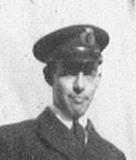
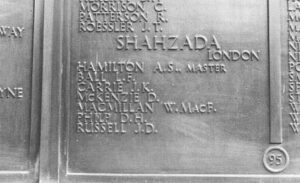
Evan Phelps Davies, Master, Merchant Navy. Evan was the son of Captain J. G. Davies and Sarah Davies, and was the husband of Blodwen J. Davies, of Merthyr Tydfil, Glamorgan. He served with the Merchant Navy aboard the S.S. Coast Wings, a London registered cargo steamer. On 27 September 1940 Coast Wings was torpedoed and sunk by the German submarine U-46, with the loss of all 16 of her crew. Evan was 36 years old when he died that day, and is commemorated on the Tower Hill Memorial, London.
John Grenville Davies, Sailor, Merchant Navy. John was the son of Evan and M. J. Davies, and the husband of Eryl Davies, of Llandyssul. He served with the Merchant Navy aboard the M.V. St. Merriel, a Newport registered ship. On 2 January 1943, St. Merriel was in Bone Harbour when the harbour came under attack from enemy aircraft. John was killed during the attack that day. He was 22 years old, and is commemorated on the Tower Hill Memorial, London.
Owen Geraint Davies, Radio Officer, Royal Air Force Transport Command. Owen was the son of John Alaska Davies and Annie Mary Davies, of Sychpant, Llandysul. He served in the Royal Air Force Transport Command, and was sadly killed on a ferry flight over Canada on 8 November 1943. He was 19 years old, and is remembered on the Ottawa Memorial, Canada.
Tom Jenkin Lloyd Evans, Chief Officer, Merchant Navy. Tom was from Tangraigfach, Llanwenog. He served with the Merchant Navy aboard the SS Brinkburn, which was a Sunderland registered cargo steamer. On 21 June 1943, Brinkburn was in convoy TE-22, when she was torpedoed and sunk by the German submarine U-73 west of Algiers. Tom was amongst 27 men who died in the sinking that day. He was 33 years old, and is commemorated on the Tower Hill Memorial, London. The ship was at the time believed to have been the victim of sabotage.
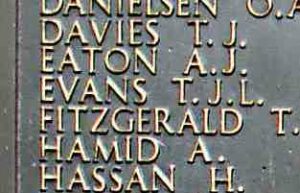
John Charles Jenkins, Pilot Officer, 64315, Royal Air Force Volunteer Reserve. John was the son of David John and Gwendolene Jenkins, of Llanwenog. He served with 214 Squadron, Royal Air Force, which was equipped with the Vickers Wellington, based at RAF Stradishall. John was killed when his aircraft, Wellington Mark II R1613 BU-G, was attacked by a German fighter whilst taking part in a raid on Bremen on 15 July 1941. The remainder of his crew bailed out of the damaged aircraft and were taken PoW. John was 20 years old, and is buried at Rheinberg War Cemetery, Germany.
Benjamin Frederick Jones, Mess Room Boy, Merchant Navy. Benjamin was from Gwylfa, Llandyssul, and served in the Merchant Navy, aboard the London registered S.S. Coast Wings, an old Dutch cargo ship, that had been launched in 1916. On 27 September 1940 Coast Wings was in the Atlantic as part of Convoy OG-43 when she was torpedoed and sank by the U-46. Benjamin was killed in the sinking of the ship. He was 24 years old, and is remembered on the Tower Hill Memorial, London.
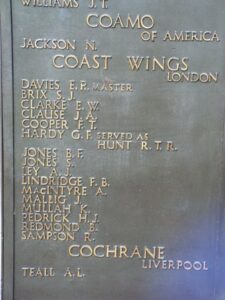
Clifford Raymond Jones, Gunner, 986733, Royal Horse Artillery. Clifford was the son of Daniel and Sarah Jane Jones, of Cottage Farm, New Inn. Clifford served with the 107th (The South Notts. Hussars) Regiment, Royal Horse Artillery. The South Notts Hussars were attached to the 5th Cavalry Brigade at the start of war. In 1940 the Brigade moved from France to Palestine, and fought in Wavell’s Offensive against the Italians. At one stage, over 5248 Italians surrendered to one gun from the South Notts. Hussars. They then moved to Tobruk, where they gained much esteem for their part in the Defence of Tobruk, along with the 9th Australian Division, and after the break out from Tobruk, they joined the 22nd Armoured Brigade. They then fought in the Battle of Knightsbridge, which lasted from 27 May to 6 June 1942, and were ordered to stand and fight until the last man. Clifford was killed in action here on 27 May 1942 aged just 21, and is remembered on the Alamein Memorial.
John Kenneth Jones, Sergeant (Pilot), 656731, Royal Air Force. John was the son of John Charles and Elsie Winifred Jones, of Portmadoc. He was a Pilot with 18 Squadron, Royal Air Force, which was equipped with the Bristol Blenheim. On 9 June 1942 John was flying a Blenheim IV, Serial Z7283, when one of the engines failed. The aircraft was too low to bale out, so John attempted a forced landing, but the Blenheim crashed at Hough-on-the-Hill into a cottage killing John and his Navigator, and an elderly couple who lived in the cottage. John was 24 years old when he died, and is buried at Dolbenmael (Bethel) Cemetery, Wales.
John Morgan Jones, Flight Sergeant (Pilot), 1313908, Royal Air Force Volunteer Reserve. John was the brother of Tom Jones, Post Office, Pentrecwrt. He volunteered to serve with the Royal Air Force, and was posted to No. 58 Operational Training Unit at RAF Tealing near, Angus, Scotland, for training as a fighter pilot. On 29 December 1943, John was flying Spitfire P8650, when he hit some trees during a low flying exercise, and crashed. John was killed in the accident, and was brought home for burial at Bwlchygroes Independent Chapelyard.
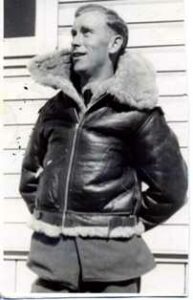
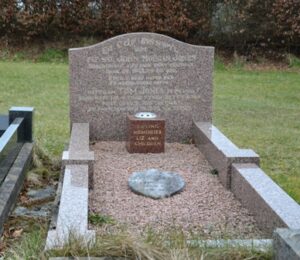
Teifi Jones, Aircraftman 1st Class, 1123171, Royal Air Force Volunteer Reserve. Teifi was the son of John and Ellen Jones, of Cwmgilfachwen, Llandyssul. He served in the RAFVR, and had been captured at some time by the Japanese in the Far East, and given the POW No. 2659. Teifi was taken to Sandakan Number 2 Camp, and the British were later moved from this camp to the Number 1 Camp about 15 April 1945. Survivors were then moved back to a wired section of Number 2 Camp on 29 May 1945. Teifi is recorded as having died of Malaria while a POW, on 21 July 1945. There is evidence of a large number of POW’s murdered by the Japanese on the ‘Sandakan Death Marches’ as they were killed, and their deaths attributed by the Japanese to disease. Teifi was 23 years old, and is remembered on the Singapore Memorial.
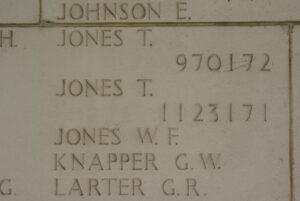
Evan Glyn Lewis, Trooper, 7914874, Royal Tank Regiment. Evan served with the 46th (The Liverpool Welsh), Royal Tank Regiment. The regiment sailed for North Africa late in 1941, and took part in the campaign against Rommel’s Afrika Korps. Evan was killed at El Alamein on 22 December 1942, aged 25, and is buried at El Alamein War Cemetery, Egypt.
John Thomas Lewis, Flying officer (Navigator), 163556, Royal Air Force Volunteer Reserve. John was born on 1 March 1922, the son of Eiffel Sidney Lewis and Amelia Lewis (nee Davies), of Garth, Drefach. He served as a Navigator with the Royal Air Force, and was killed when his Halifax bomber crashed during landing at RAF Rutterworth on 16 November 1944. John was 22 years old, and is buried at Drefach Baptist Cemetery.
John Hooper Price, BA, Chaplain 4th Class, 125463, Royal Army Chaplains Department. John was the son of David and Mary Price, and the husband of Mary Elizabeth Price, of Gwithian, Cornwall. He was a Chaplain with the Royal Army Chaplain’s Department, and served in North Africa. John was killed in Egypt on 19 December 1941, aged 42, and is buried at Kantara War Memorial Cemetery, Egypt.
Evan Leonard Pugh, Third Officer, Merchant Navy. Evan was the son of William Pugh, and of Jane Pugh, of Ciliaiu Aeron. He served with the Merchant Navy aboard the MV San Calisto, a London registered oil tanker. On 2 December 1939, San Calisto struck a mine and sank two and a half miles south-west of the Tongue lightship. Evan was among six men killed during the sinking that day. He was 27 years old, and is commemorated on the Tower Hill Memorial, London.
John Ieuan Rees, Flight Engineer, 1381572, Royal Air Force. John was born on 27 December 1920, the son of Elias and Jane Elizabeth Rees, of Pantbach, Maesllyn. He had been a prisoner of war during the war, but had remained in the Royal Air Force, based at RAF Lyneham. John was killed in an infamous air crash at Northolt Airport on 4 July 1948, when the Avro York, Serial MW248, that he was a crewmember of, when it collided with a Scandinavian Airlines Douglas DC-6 over RAF Northolt. John was 27 years old, and was buried in Gwernllwyn Methodist Chapelyard. He is not commemorated by the CWGC, as he was not a war casualty.
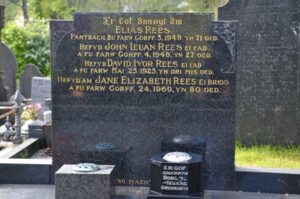
Alcwyn Lloyd Thomas, Supply Assistant, D/MX67820, Royal Navy. Alcwyn was the son of Thomas Enoch and Anne Thomas, of Thespian, Llandyssul, and served in the Royal Navy, aboard HMS Charybdis, a Dido-Class Cruiser, that had been launched in 1940, and commissioned a year later. She served in the Mediterranean during the Malta Convoys, and then covered the Allied Landings on North Africa and Salerno, before moving to the Atlantic in 1943. In October, she was part of a force that had been sent to intercept a German merchant ship, which was carrying important war materials to Germany, when she was torpedoed and sunk by a German Torpedo Boat on 23 October 1943. Alcwyn was killed in the loss of the ship that day, aged 31, and is remembered on the Plymouth Naval Memorial, Devon.
